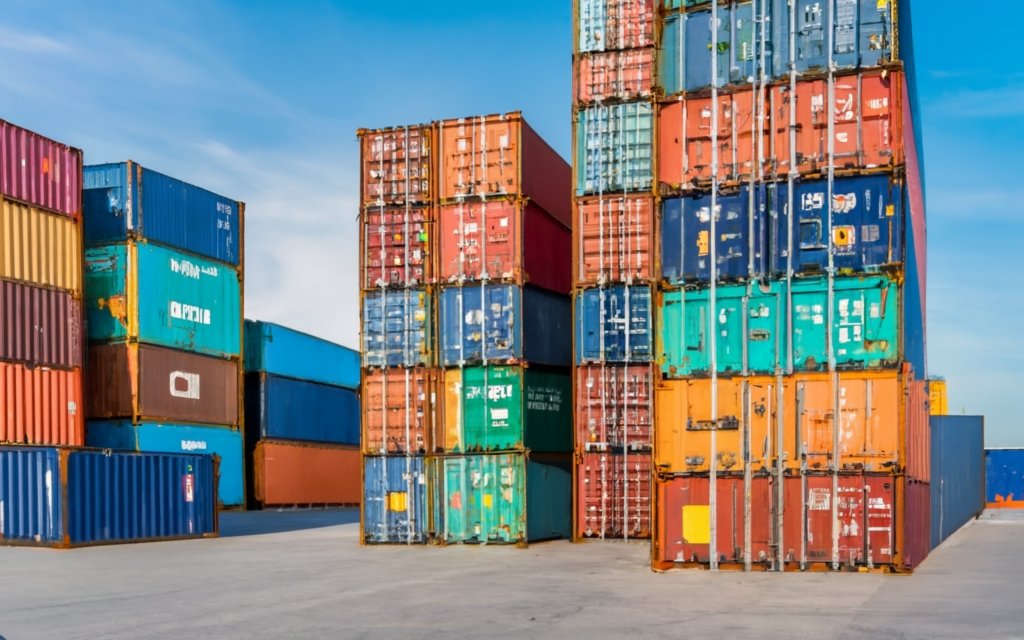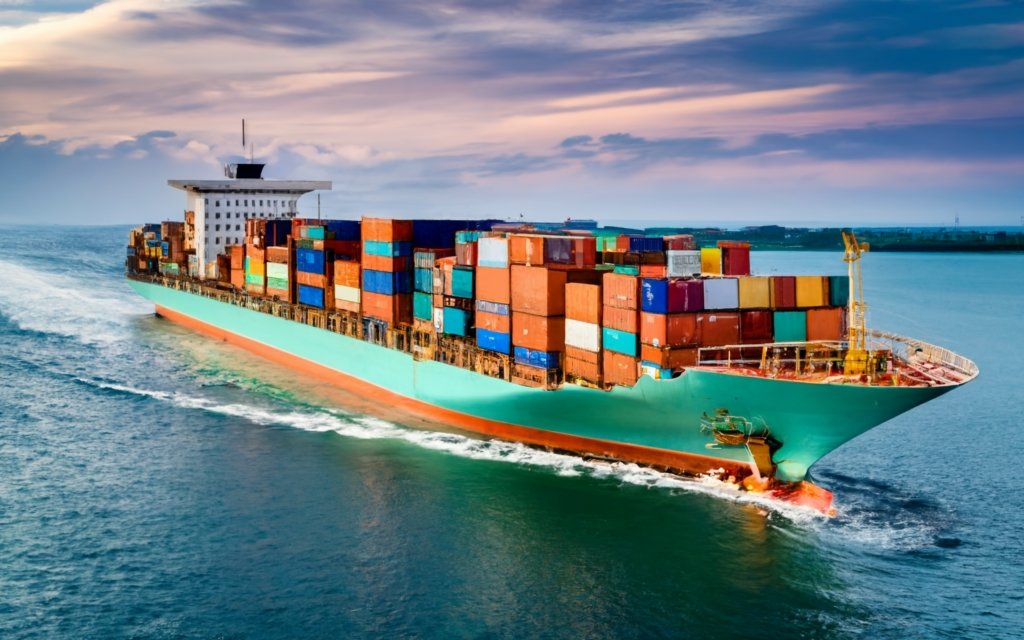Are you in the process of shipping goods or products but not sure which container size to choose? Look no further! In this must-read guide, we will help you navigate the decision of selecting the right containers shipping sizes for your shipping needs. Whether you’re a small business owner or an individual trying to send personal belongings overseas, finding the optimal container size is crucial to ensure cost-effectiveness and secure transportation.
With a wide array of container options available, it can be overwhelming to determine the perfect fit for your cargo. But fear not! Our expert advice and insights will guide you through the decision-making process, taking into account factors such as the volume, weight, and fragility of your items.
We understand the importance of selecting a container that provides sufficient space for your goods without wasting unnecessary resources. By the end of this guide, you’ll be equipped with the knowledge and understanding needed to confidently make the right container size choice for your shipping needs.
Importance of choosing the right container size for shipping

Choosing the right containers shipping sizes for your shipping needs is not only a matter of convenience, but also a matter of efficiency and economy. The size of the container you choose will affect several aspects of your shipping process, such as:
- The cost of transportation: The larger the container, the more expensive it will be to transport it by sea, air, or land. You want to avoid paying for empty space that you don’t need, or worse, having to pay extra fees for exceeding the weight or volume limits of your container.
- The security of your goods: The smaller the container, the less likely it is that your goods will shift or get damaged during transit. You want to ensure that your goods are properly packed and secured inside the container, leaving no room for movement or vibration. You also want to protect your goods from external factors such as weather, theft, or vandalism.
- The ease of handling and loading: The size of the container will also affect how easy it is to handle and load it onto the carrier vehicle. You want to choose a container that is compatible with the equipment and facilities available at your origin and destination points. You also want to consider the accessibility and clearance of the roads and ports that you will use for your shipment.
As you can see, choosing the right container size for your shipping needs is not a trivial decision. It can have a significant impact on the quality, speed, and cost of your shipping service. That’s why it’s important to do some research and planning before you make your final choice.
containers shipping sizes
Types of containers used in shipping

Containers are standardized metal boxes that are used to transport goods by sea, air, or land. They come in different sizes and shapes, depending on their purpose and design. The most common types of containers used in shipping are:
- Dry containers: These are the most basic and versatile containers that are used to transport general cargo such as clothing, furniture, electronics, machinery, etc. They are usually made of steel or aluminum and have doors at one or both ends. They are weatherproof and can be stacked on top of each other.
- Reefer containers: These are refrigerated containers that are used to transport perishable goods such as food, flowers, pharmaceuticals, etc. They have an internal cooling system that maintains a constant temperature and humidity level inside the container. They require an external power source to operate and are more expensive than dry containers.
- Open-top containers: These are containers that have no roof and can be covered with a tarpaulin or canvas. They are used to transport oversized or irregularly shaped cargo that cannot fit inside a standard container, such as machinery parts, pipes, timber, etc. They can be loaded from above using a crane or other lifting equipment.
- Flat-rack containers: These are containers that have no sides or roof and can be folded when not in use. They are used to transport heavy or bulky cargo that requires extra support and stability, such as vehicles, boats, construction equipment, etc. They can be loaded from the sides or ends using a forklift or other loading equipment.
- Tank containers: These are cylindrical containers that are used to transport liquid or gaseous cargo such as chemicals, fuels, oils, etc. They have valves and fittings that allow them to be connected to hoses or pipes for loading and unloading. They are made of stainless steel or other corrosion-resistant materials and are pressure-tested and certified for safety.
These are some of the most common types of containers used in shipping, but there are also other specialized containers that cater to specific needs and requirements. For example, there are high-cube containers that have extra height for more volume capacity; ventilated containers that have openings for air circulation; insulated containers that have thermal insulation for temperature-sensitive cargo; open-side containers that have doors on one or both sides for easy access; platform containers that have no walls or roof and are used as a base for loading pallets or crates; and so on.
Factors to consider when choosing a container size.

Now that you know the different types of containers used in shipping, you might be wondering how to choose the right one for your shipping needs. There are several factors that you need to consider when making this decision, such as:
- The size of your shipment: The first and most obvious factor is the size of your shipment, which includes the dimensions, weight, and quantity of your goods. You want to choose a container that can accommodate your entire shipment without leaving too much empty space or exceeding the maximum capacity. You also want to consider the shape and orientation of your goods, and how they can be arranged and packed inside the container.
- The type of your goods: The second factor is the type of your goods, which includes the nature, quality, and value of your cargo. You want to choose a container that can protect your goods from damage, loss, or theft during transit. You also want to consider the special requirements or regulations that apply to your goods, such as temperature, humidity, ventilation, security, etc.
- The destination of your shipment: The third factor is the destination of your shipment, which includes the distance, route, and mode of transportation that you will use for your shipment. You want to choose a container that is compatible with the carrier vehicle and the loading and unloading facilities at your origin and destination points. You also want to consider the customs and import/export laws that apply to your shipment, such as documentation, inspection, taxation, etc.
These are some of the main factors that you need to consider when choosing a container size for your shipping needs. However, there are also other factors that may affect your decision, such as the availability, cost, and reliability of the container service provider; the frequency, timing, and urgency of your shipment; the environmental and social impact of your shipment; and so on.
Standard container sizes and their specifications

To help you choose the right containers shipping sizes and finding the perfect dimensions for your shipping needs, we have compiled a list of the standard container sizes and their specifications. These are the most commonly used containers in international shipping and are based on the ISO (International Organization for Standardization) standards. Note that these are approximate measurements and may vary slightly depending on the manufacturer and model of the container.
| Container Size | Length | Width | Height | Internal Volume | Maximum Weight |
|---|---|---|---|---|---|
| 20-foot dry container | 6.06 m (19 ft 10 in) | 2.44 m (8 ft) | 2.59 m (8 ft 6 in) | 33.2 m³ (1,172 ft³) | 28.2 t (62,150 lb) |
| 40-foot dry container | 12.19 m (40 ft) | 2.44 m (8 ft) | 2.59 m (8 ft 6 in) | 67.7 m³ (2,390 ft³) | 30.4 t (67,000 lb) |
| 20-foot high-cube container | 6.06 m (19 ft 10 in) | 2.44 m (8 ft) | 2.90 m (9 ft 6 in) | 37.4 m³ (1,320 ft³) | 28.8 t (63,500 lb) |
| 40-foot high-cube container | 12.19 m (40 ft) | 2.44 m (8 ft) | 2.90 m (9 ft 6 in) | 76.4 m³ (2,700 ft³) | 30.4 t (67,000 lb) |
| 20-foot reefer container | 5.49 m (18 ft) | 2.29 m (7 ft 6 in) | 2.27 m (7 ft 5 in) | 28.3 m³ (1,000 ft³) | 27 t (59,500 lb) |
| 40-foot reefer container | 11.58 m (38 ft) | 2.29 m (7 ft 6 in) | 2.27 m (7 ft 5 in) | 59.3 m³ (2,100 ft³) | 29 t (63,900 lb) |
| 20-foot open-top container | 6.06 m (19 ft 10 in) | 2.44 m (8 ft) | 2.59 m (8 ft 6 in) / open top | 33.2 m³(1,172ft³) | 28t(61,700lb) |
| 40-foot open-top container | 12.19m(40ft) | 2.44m(8ft) | 2.59m(8ft6in)/open top | 67.7 m³ (2,390 ft³ | 30.4 t (67,000 lb) |
These are some of the standard container sizes and their specifications that you can choose from for your shipping needs. However, you should also consider the following factors when determining the size of your shipment.
Determining the size of your shipment
One of the most important steps in choosing the right container size for your shipping needs is to determine the size of your shipment. This involves assessing the weight and volume of your goods, as well as any special requirements or restrictions that may apply to your cargo.
Assessing the weight and volume of your goods
The weight and volume of your goods are two key factors that affect the size of the container you need. The weight of your goods refers to how heavy they are, while the volume of your goods refers to how much space they occupy. You need to measure both the weight and volume of your goods accurately and precisely, as they will determine the maximum capacity and loadability of your container.
To measure the weight of your goods, you can use a scale or a weighing machine that can handle the load. You should weigh each item individually and add up the total weight of your shipment. You should also include the weight of any packaging materials, such as boxes, crates, pallets, etc., that you will use to pack and secure your goods inside the container.
To measure the volume of your goods, you can use a tape measure or a ruler to measure the length, width, and height of each item. You should multiply these dimensions to get the cubic volume of each item, and then add up the total volume of your shipment. You should also include the volume of any packaging materials that you will use to pack and secure your goods inside the container.
Once you have measured the weight and volume of your goods, you can compare them with the specifications of the standard container sizes to see which one can fit your shipment. You should choose a container that can accommodate both the weight and volume of your goods without exceeding the maximum capacity or loadability. You should also leave some extra space for ventilation and movement inside the container.
Specialized containers shipping sizes for specific cargo types
Another factor that may affect the size of your shipment is the type of cargo that you are shipping. Some types of cargo may require specialized containers that have different sizes and features than the standard ones. For example, if you are shipping perishable goods that need to be kept at a certain temperature and humidity level, you may need a reefer container that has an internal cooling system. If you are shipping oversized or irregularly shaped goods that cannot fit inside a standard container, you may need an open-top or flat-rack container that can be loaded from above or from the sides. If you are shipping liquid or gaseous goods that need to be stored in a pressurized and sealed environment, you may need a tank container that has valves and fittings for loading and unloading.
You should consult with your shipping service provider or carrier to see what types of specialized containers they offer and what are their specifications. You should also check with the customs and import/export authorities at your origin and destination points to see what the regulations and requirements for shipping specific cargo types are. You should choose a specialized container that can meet both the technical and legal aspects of your shipment.
Additional considerations for international shipping
If you are shipping internationally, there are some additional considerations that you need to take into account when choosing a container size for your shipping needs. These include:
- The mode of transportation: Depending on whether you are shipping by sea, air, or land, you may have different options and limitations for choosing a container size. For example, if you are shipping by sea, you may have more flexibility in choosing a larger or heavier container than if you are shipping by air or land. However, if you are shipping by air or land, you may have more speed and convenience in choosing a smaller or lighter container than if you are shipping by sea.
- The carrier vehicle: Depending on what type of vehicle or vessel will carry your container, you may have different compatibility and availability issues for choosing a container size. For example, if you are shipping by truck, train, or plane, you may have to choose a container size that can fit within their dimensions and weight limits. However, if you are shipping by ship, you may have more options in choosing a container size that can match their capacity and loadability.
- The loading and unloading facilities: Depending on what type of equipment and facilities are available at your origin and destination points, you may have different ease and accessibility issues for choosing a container size. For example, if you have access to cranes, forklifts, or other lifting equipment at both ends of your shipment, you may have more convenience in choosing a larger or heavier container than if you don’t. However, if you don’t have access to such equipment or facilities at either end of your shipment, you may have more difficulty in choosing a larger or heavier container than if you do.
You should consult with your shipping service provider or carrier to see what the best options and solutions are for choosing a container size for your international shipping needs. You should also check with the transportation and logistics authorities at your origin and destination points to see what the standards and regulations are for choosing a container size for your international shipping needs.
Tips for optimizing containers shipping sizes and reducing costs

Choosing the right container size for your shipping needs is not only important for ensuring the quality and security of your goods, but also for optimizing the space and reducing the costs of your shipment. Here are some tips that can help you achieve these goals:
- Pack your goods efficiently: You should pack your goods in a way that maximizes the space and minimizes the weight of your container. You should use appropriate packaging materials, such as boxes, crates, pallets, etc., that can protect your goods from damage and fit them snugly inside the container. You should also arrange your goods in a way that optimizes the shape and orientation of your container. You should avoid leaving any gaps or empty spaces between your goods or between your goods and the walls of the container. You should also avoid stacking your goods too high or too low inside the container.
- Choose a suitable container type: You should choose a container type that matches the nature and requirements of your goods. You should avoid using a specialized container that is not necessary or suitable for your goods, as it may increase the cost and complexity of your shipment. You should also avoid using a standard container that is not adequate or appropriate for your goods, as it may compromise the quality and security of your shipment.
- Compare different container sizes: You should compare different container sizes to see which one can offer the best value and efficiency for your shipment. You should consider both the cost and the capacity of each container size, as well as the availability and compatibility of each container size with your shipping service provider, carrier, and destination. You should choose a container size that can fit your entire shipment without wasting any space or resources, or exceeding any limits or restrictions.
Conclusion
Choosing the right container size for your shipping needs is a crucial decision that can affect the success and satisfaction of your shipping experience. By following this guide, you can make an informed and confident choice that can meet both your personal and professional needs. Whether you are shipping locally or internationally, by sea, air, or land, you can find the perfect container size that can ensure a seamless and successful shipping experience.




